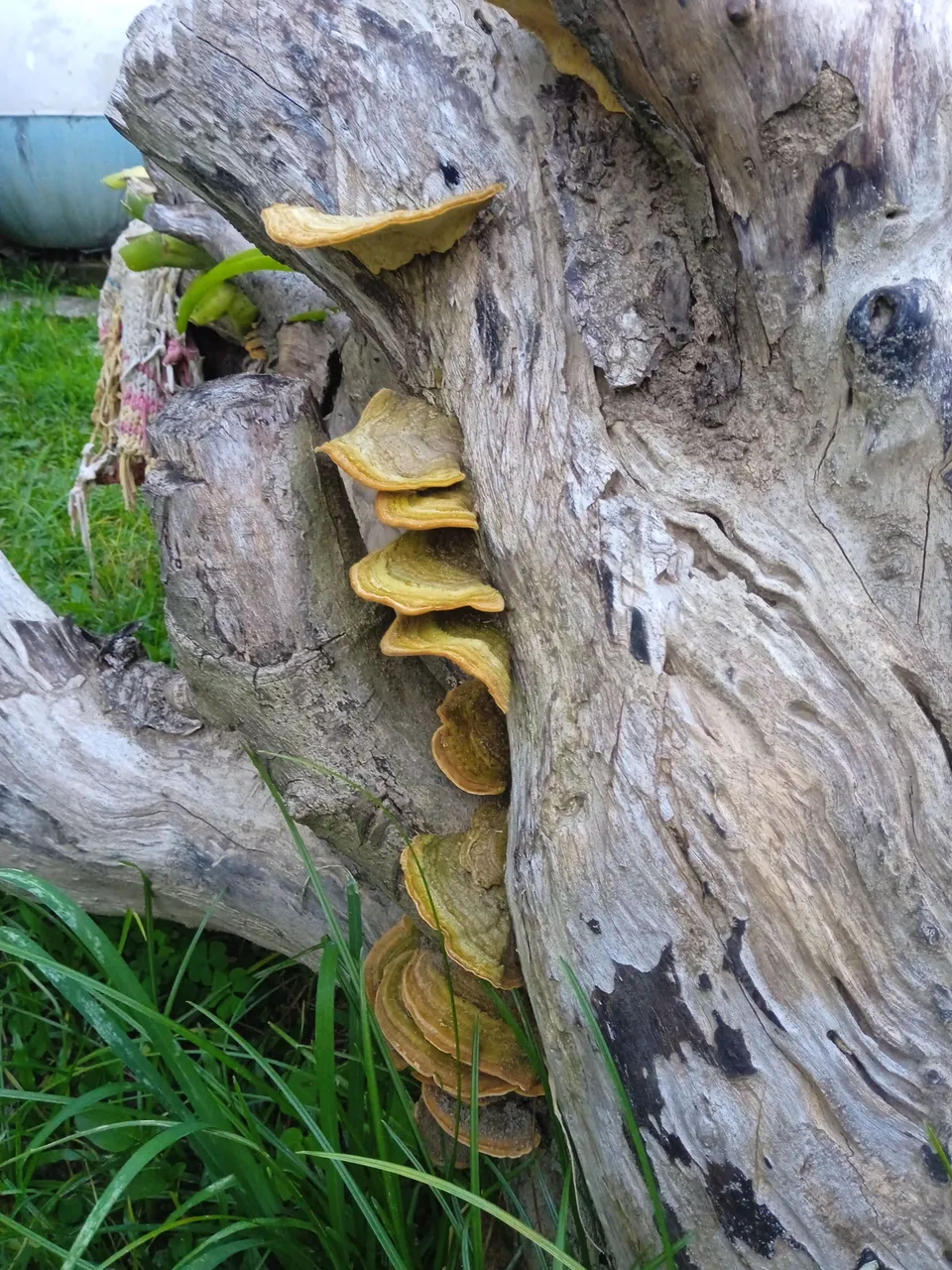Mushrooms
Hello Amazing Nature Community. To do this post, I took a tour to my backyard looking for mushrooms.
Mushrooms grow spontaneously in grass, in pots or on logs. I have always found them beautiful and interesting, but since I don't know much about them, whether they are edible or not, I just enjoy looking and photographing them. Here's what I was able to find out about them:
Panaeolus o agaricus antillarum
Is a common and widely distributed small to medium-sized gray mushroom wich grows on dung. It is edible but not commonly eaten. Found from northen North America through Mexico into northen South America.
Champiñones
Hola comunidad de Amazing Nature. Para hacer este post hice un recorrido por el patio de mi casa buscando hongos. Ellos crecen espontáneamente en la grama, en macetas o sobre troncos. Siempre me han parecido bonitos e interesantes pero, como no conozco mucho sobre ellos, si son comestibles o no, sólo los disfruto mirándolos, y fotografiándolos. He aquí lo que pude investigar de ellos:
Panaeolus o agaricus antillarum
Es un hongo gris de tamaño pequeño a mediano, común y ampliamente distribuido que crece en el estiércol. Es comestible pero no se come comúnmente. Se encuentra desde el norte de América del Norte, México hasta el norte de América del Sur.
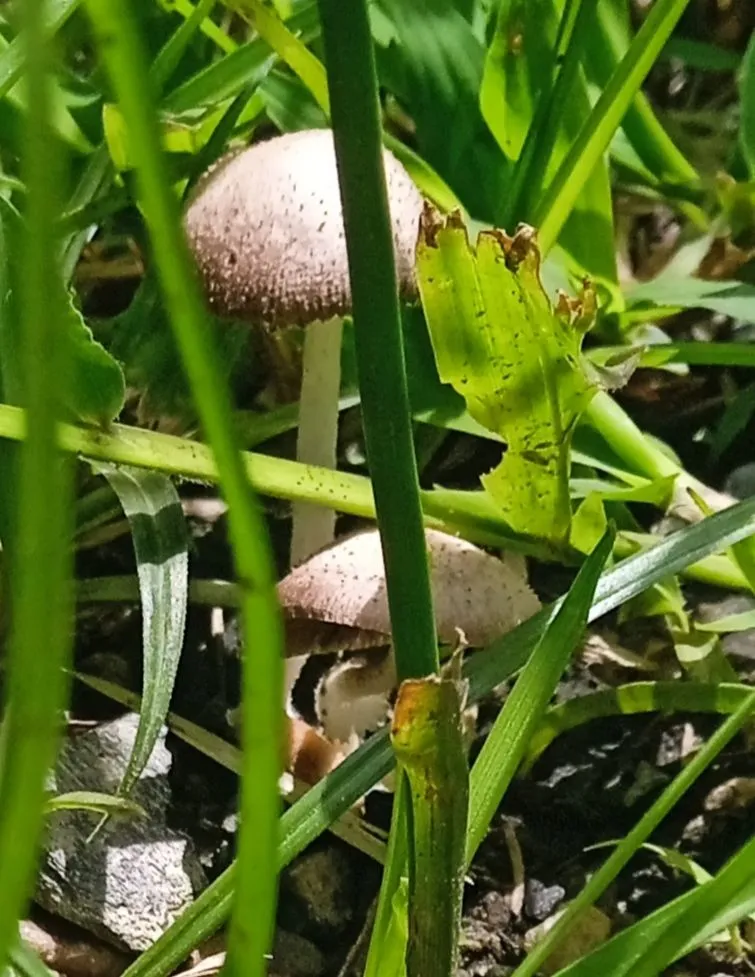
Agaricus is a broad genus of basidiomycete mushrooms that contains both edible and poisonous species. It is estimated that there are about 300 species of Agaricus in the world. Profusely cultivated species belong to this genus, such as the common mushroom (Agaricus bisorus).
Agaricus es un amplio género de hongos basidiomicetos que contiene especies tanto comestibles como venenosas. Se calcula que existen unas 300 especies de Agaricus en el mundo. A este genero pertenecen especies profusamente cultivadas, como el champiñón común (Agaricus bisorus).
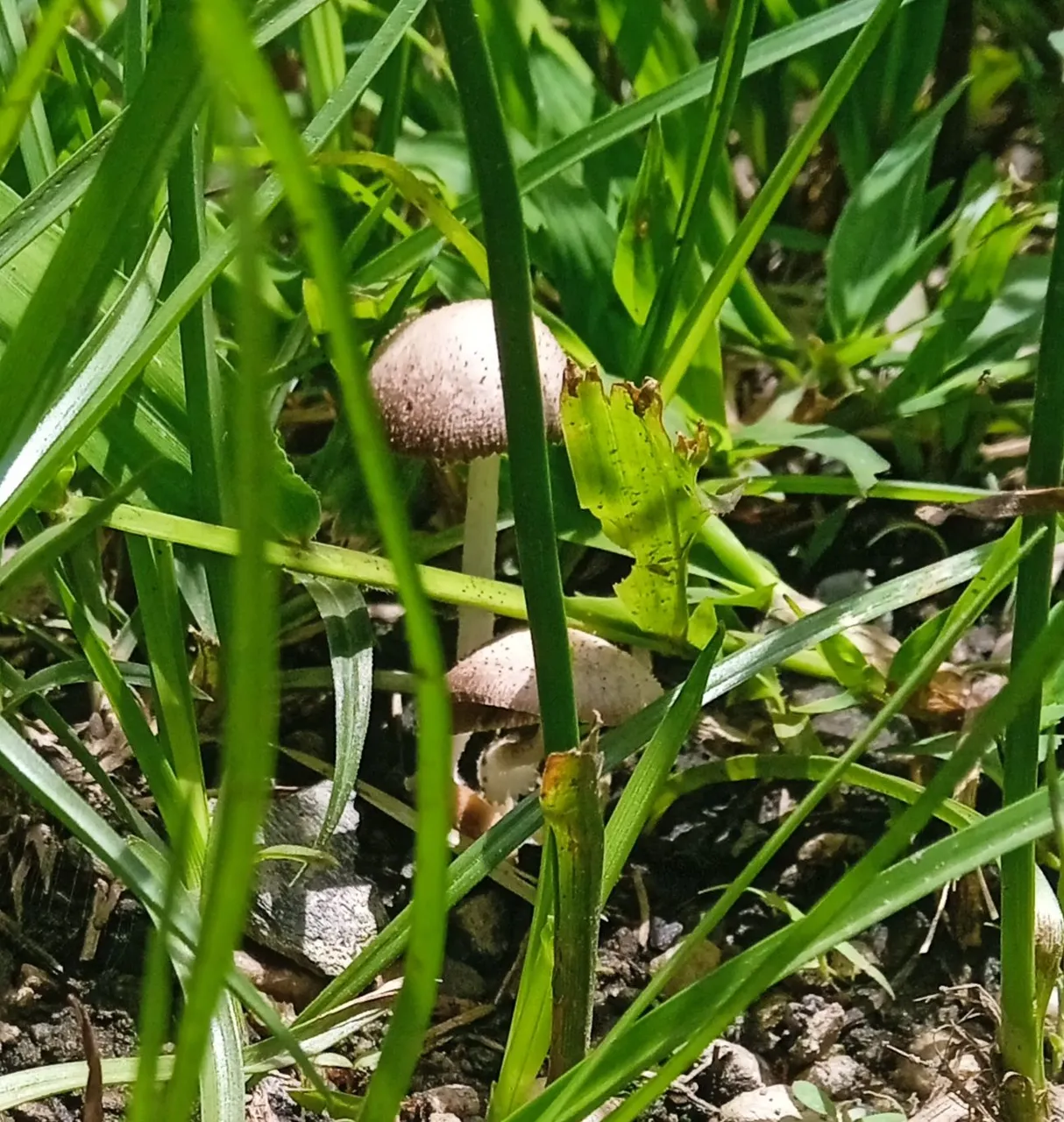
Parasola plicatilis
It is a small saprotrophic fungus of the psathyrellaceae family with a plicated cap (diameter up to 35mm). This species is a decomposer found in grassy areas, alone, disersed or in small groups. The fruitful clumps grow at night after the rain and self-digest after the spores disperse. If not, they dry out quickly in the morning sun, or eventually collapse from the weight of their hats.
Parasola plicatilis
Es una especie de hongo saprotrófico pequeño de la familia psathyrellaceae con sombrero plicado (diámetro hasta 35mm). Esta especie es un descomponedor que se encuentra en zonas de pastos, sólo, disperso o en pequeños grupos. Los grupos fructíferos crecen por la noche después de la lluvia y se auto digieren luego que se dispersan las esporas. Sino, se secan rápidamente con el sol de la mañana, o eventualmente colapsan or el peso de sus sombreros.
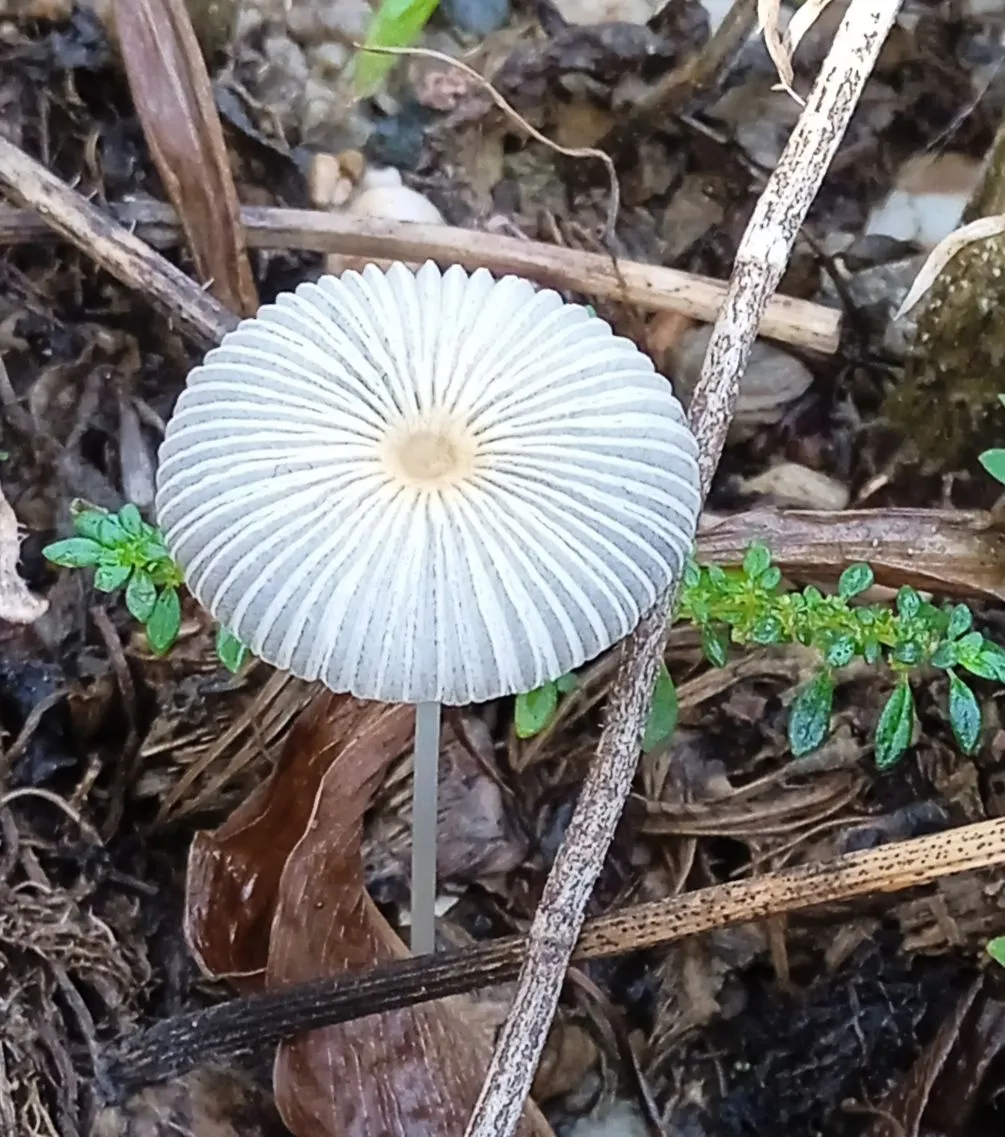
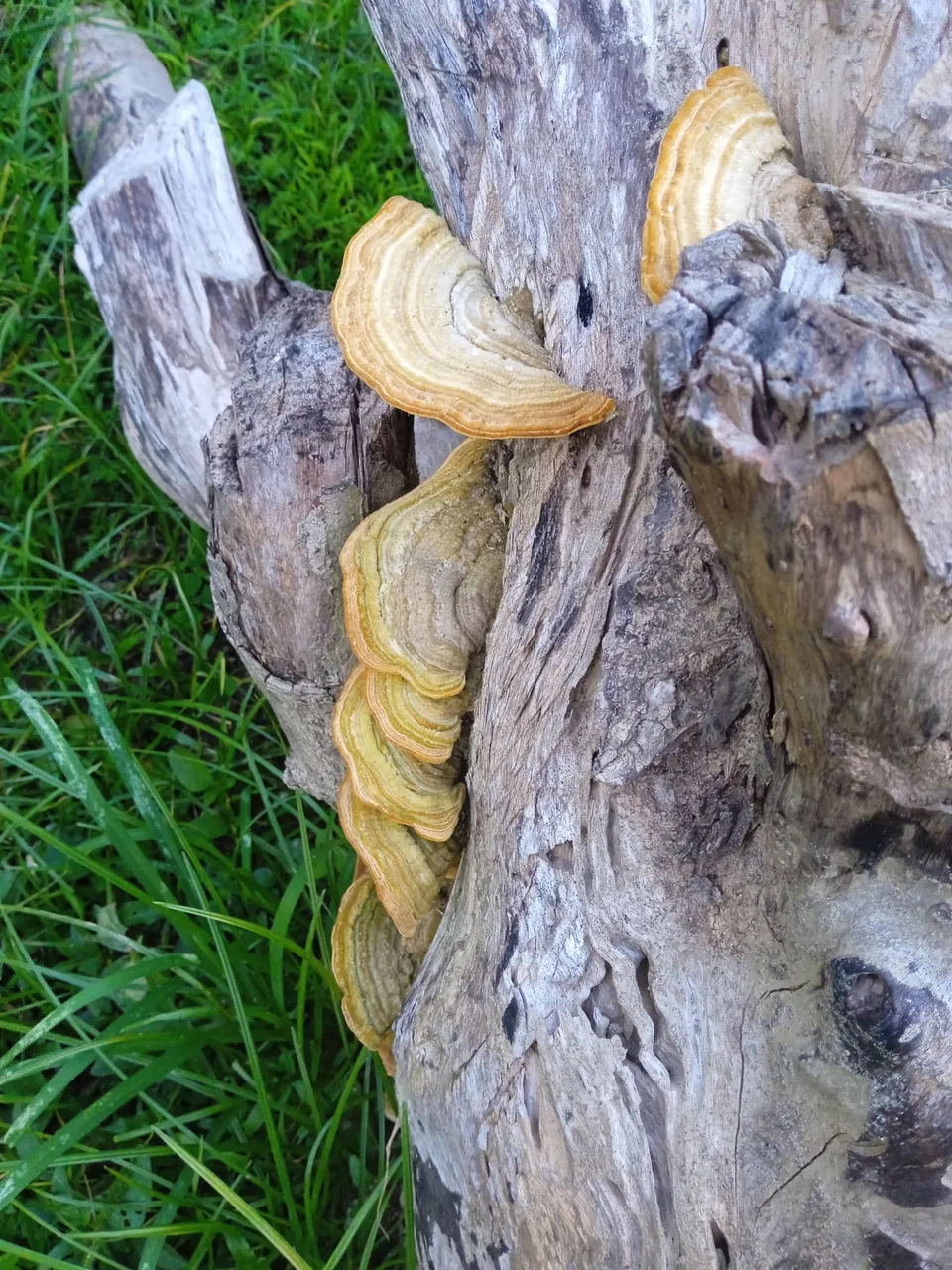
Bracket fungi, shelf fungi, phiylum Basidiomycota.
Polypores are a group of fungi that form fruiting bodies with pores or tubes at the bottom. They are a morphological group of basidiomycetes such as sunken fungi and hydroid fungi. Not all polypores are closely related to each other. Polypores are also called support fungi, and their woody fruiting bodies are called conks. Most polypores that consume wood inhabit trunks or branches, but some species that inhabit the soil form mycorrhiza with trees. Polypores and their relatives, corticioid fungi, are the most important agents of wood decomposition. therefore, they play a very important role in the cycling of nutrients and carbon in forest ecosystems. Over a thousand species of polypores have been described to science, but the great art of diversity is still unknown, even in relatively well-studied temperate areas. Polypores are much more diverse in older natural forests than in younger managed forests or plantations. Consequently, several species have drastically declined and are threatened with extinction due to logging and deforestation.
Hongos de soporte, hongos de repisa, filo Basidiomycota.
Los Poliporos son un grupo de hongos que forman cuerpos fructiferos con poros o tubos en la parte inferior. Son un grupo morfológico de basidiomicetos como hongos hundidos y hongos hidroides. No todos los poliporos estan estrechamente relacionados entre ellos. Los poliporos tambien se llaman hongos de soporte y sus cuerpos fructíferos leñosos se llaman conks. La mayoría de los poliporos que consumen la madera habitan troncos y ramas, pero algunas especies que habitan el suelo forman mycorrhiza con árboles.
Los poliporos y sus parientes, los hongos corticioides, son los agentes más importantes de la descomposición de la madera, por lo tanto, desempeñan un papel muy importante en el ciclo de los nutrientes y el carbono de los ecosistemas forestales. Se han descrito más de mil especies de poliporos a la ciencia, pero gran arte de la diversidad aun se desconoce, aún en áreas templadas relativamente bien estudiadas. Los poliporos son mucho más diversos en bosques naturales viejos que en bosques manejados más jóvenes o plantaciones. En consecuencia, varias especies han disminuido drásticamente y están amenazadas de extinción debido a la tala y a la deforestación.
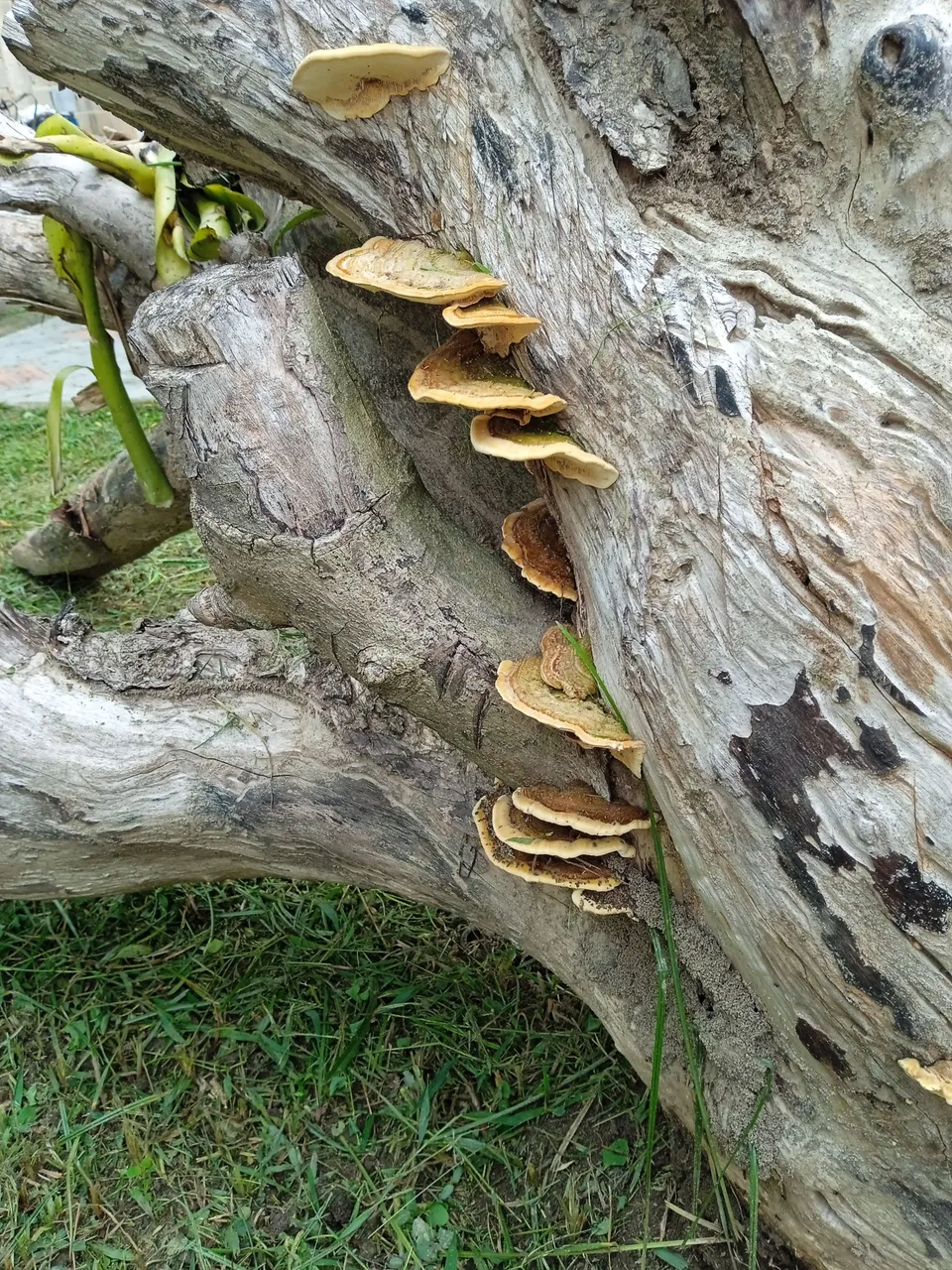



Recipe
Next I will give you a simple recipe of pasta with mushroom sauce
Ingredients:
- 1 Kg of long or short pasta
- 1/4 cup oil
- 2 spoons of butter
- 150 grams of chopped mushrooms
- 1 diced onion
- 6 cloves of garlic
- Chicken broth
- 200 milliliters of cream
- Grated Parmesan cheese
- Salt and pepper to taste
Preparation
Boil 2 and a half liters of water with salt
Add the pasta and let it cook
Strain and reserve in a refractory
In a frying pan we put the oil over medium heat and fry the onion, garlic and mushrooms. Add the heavy cream, the chicken broth, the salt and the pepper. When it thickens, we lower the heat and mix the pasta with the sauce. When serving, add the Parmesan cheese and enjoy.
Bon appetit 😋!
Receta
A continuación les mostraré una receta sencilla de pasta con salsa de champiñones
Ingredientes:
- 1 Kg de pasta larga o corta
- 1/4 taza de aceite
- 2 cucharadas de mantequilla
- 150 gramos de champiñones picados
- 1 cebolla picada en cuadritos
- 6 dientes de ajo
- Caldo de pollo
- 200 mililitros de crema de leche
- Queso parmesano rallado
- Sal y pimienta al gusto
Preparación
Ponemos a hervir 2 litros y medio de agua con sal
Agregamos la pasta y dejamos cocer
Colamos y reservamos en un refractario
En una sartén ponemos el aceite a fuego mediano y freimos la cebolla, el ajo y los champiñones. Agregamos la crema de leche, el caldo de pollo, la sal y la pimienta. Cuando espese bajamos del fuego y mezclamos la pasta con la salsa. Al momento de servir añadimos el queso parmesano y a disfrutar.
Buen provecho 😋!


